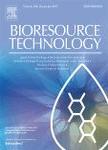版权所有:内蒙古大学图书馆 技术提供:维普资讯• 智图
内蒙古自治区呼和浩特市赛罕区大学西街235号 邮编: 010021

作者机构:Feng Chia Univ PhD Program Mech & Aeronaut Engn Taichung 407 Taiwan Feng Chia Univ Inst Green Prod Taichung 407 Taiwan Inst Teknol Bandung Sch Life Sci & Technol Bandung 40132 Indonesia
出 版 物:《BIORESOURCE TECHNOLOGY》 (Bioresour. Technol.)
年 卷 期:2025年第422卷
页 面:132214页
核心收录:
学科分类:0820[工学-石油与天然气工程] 0830[工学-环境科学与工程(可授工学、理学、农学学位)] 0828[工学-农业工程] 08[工学] 0836[工学-生物工程]
基 金:National Science and Technology Council Taiwan [112-2923-E-035-001-MY3 112-2218-E-035-002 NSTC 111-2221-E-035-040-MY3]
主 题:Biohydrogen Biochar Clostridium tertium Dark fermentation Enhancement Nanoparticles
摘 要:Clostridium spp. holds significant potential hydrogen-producing bacteria for biohydrogen production which can be used to treat a wide range of carbon sources, including biomass waste. Previous studies have given considerable attention to C. acetobutylicum, C. beijerinckii, and C. butyricum, which have efficiently converted sugar into biohydrogen. This study aims to isolate the potent Clostridia genera and investigate optimal conditions for cell growth and volatile fatty acids production, such as temperature, initial pH, and medium compositions. This study also examined the effect of different biochar (10 g/L), magnetite (magnetic nanoparticles, 100 mg/L), and magnetic fields on biohydrogen production performances. The results revealed that Clostridium tertium IGP01 was isolated with optimal growth conditions when sucrose was utilized as a carbon source with an organic nitrogen source at 37 degrees C with an initial pH of 5.5. In this condition, C. tertium IGP01 achieves the highest biohydrogen production yield of 4.21 f 0.19 mmol H2/mmol sucrose, 71.7 f 0.06 % hydrogen content, and production rate of 1.08 f 0.05 L/*** after 19 h incubation. Biochar addition enhanced biohydrogen production by 31.6-35.8 %, while the magnetite and magnetic field also improved by 11.7 % and 18.7 %, respectively. The butyric (2,844.5 f 4.3 mg/L) and acetic acids (1,383.4 f 1.9 mg/L) were observed as dominant volatile fatty acids (VFAS) produced as by-products after fermentation for 24 h. As the first study on C. tertium IGP01 in a single culture for biohydrogen production, these findings highlight the potential of C. tertium IGP01 and provide critical insight for dark fermentation control conditions.